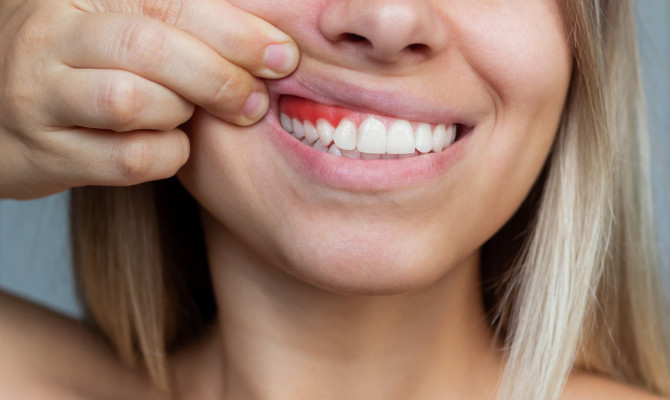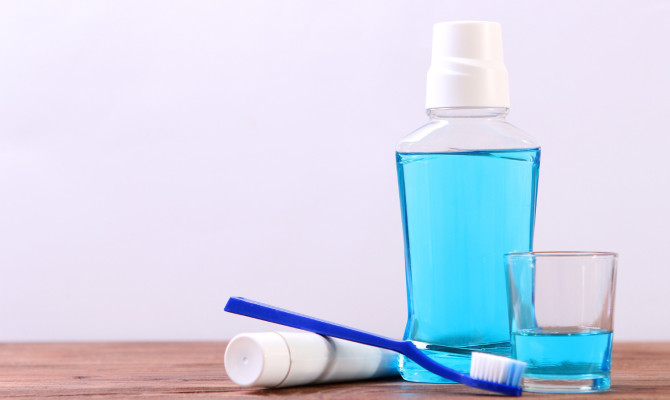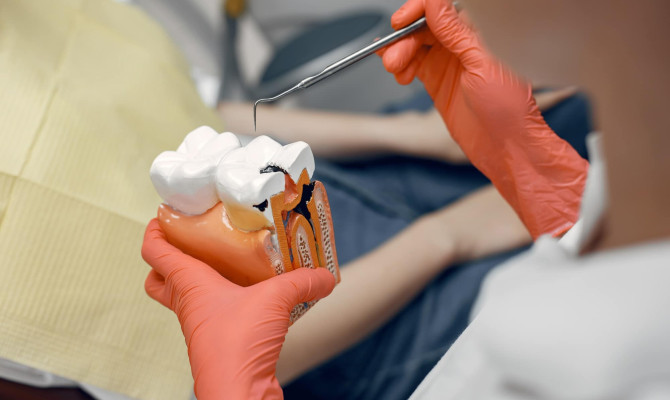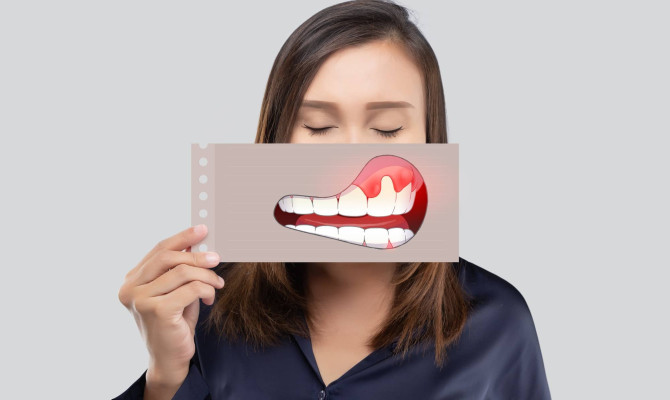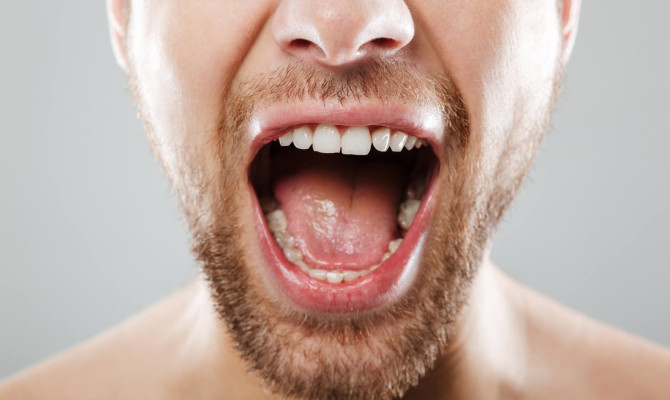What is Tartar: Cause, Symptoms and Treatment

- Tartar
- 17 Aug 2023
Overview
What is Tartar?
Tartar is a hard, yellowish deposit on the teeth known as dental calculus. For general well-being, maintaining proper dental health is essential. Despite brushing and flossing regularly, many people develop tartar deposits. Additionally, it may develop on dental crowns, fillings, or dentures. Once formed, it cannot be removed by routine brushing and flossing.
The symptoms, risks, causes, diagnosis, prognosis, treatment, and prevention of this widespread dental condition known as dental calculus will all be covered in this article.

Symptoms
Symptoms of Tartar
The presence of dental calculus is frequently overlooked in its early stages. However, as the illness worsens, people may suffer the following symptoms:
- Yellow or brown deposits on teeth.
- Bad breath.
- Gums inflammation.
Yellowish or brownish deposits on teeth
- The formation of tartar on the teeth typically takes the form of a hard, calcified substance that can range in color from light yellow to dark brown1Symptoms| Researched based study from Clevelandclinic.org
Bad breath
- Bacterial buildup in dental calculus can cause prolonged bad breath or halitosis.
Gum inflammation
- Tartar accumulation along the gum line can cause inflammation of the gums resulting in red, painful and swollen gums that bleed when flossing or brushing.
Types
Types of tartar(dental calculus)
Dental calculus or tartar can be of two types:
- Supragingival calculus
- Subgingival calculus
Supragingival calculus
- Supragingival calculus refers to tartar that forms on the teeth above the gum line and is visible to the dentist or dental hygienist.
- It is most typically visible on the tongue-facing surface of the lower front teeth, over uneven fillings that can trap plaque for a long time, and on the surfaces of dentures.2Types| Researched based study from Uomus.edu.iq
Subgingival calculus
- Subgingival calculus refers to tartar that accumulates below the gum line, typically on the root surfaces of the teeth, and is thus not immediately visible.
- This form of calculus is often dark brown to greenish-black in color and is detectable with a dental instrument known as an explorer.
Composition
What is tartar made of?
Calculus is made up of:
- Inorganic materials
- Organic materials
Inorganic materials
- Accounts for around 70-80% of the calculus.3Composition| Researched based study from Sciencedirect.com
- Includes dicalcium phosphate dihydrate, whitlockite, hydroxyapatite, octa calcium phosphate and amorphous calcium phosphate among others.
Organic materials
- Proteins, carbohydrates, and a tiny lipid portion comprise the organic composition.
Causes
Causes of Tartar
- Dental calculus or tartar is mainly formed by the hardening of plaque, a sticky layer of bacteria that pile up on the teeth.
- When mixed with saliva and food particles, plaque can solidify and harden into tartar due to mineral deposits such as calcium and phosphates.4Causes| Researched based study from Nlm.nih.gov
Risk factors
Risk Factors for Dental Calculus or Tartar
While dental calculus can form in anyone’s mouth, some variables enhance the chance:
- Age – Because they have been exposed to the plaque for extended periods, older folks may accumulate more tartar5Risk factors| Researched based study from Nlm.nih.gov
- Inadequate oral hygiene – including poor brushing, flossing, and inconsistent dental check-ups can allow plaque to build up, resulting in tartar formation.
- Smoking or chewing tobacco – enhances plaque development, which raises the possibility of tartar formation.
- Diet – A diet strong in sugar and carbs increases bacteria development, raising the possibility of plaque formation and tartar buildup.
- Misaligned teeth – People with crowded teeth may find it hard to clean between their teeth, attract plaque, and promote rapid calculus production.5Risk factors| Researched based study from Nlm.nih.gov
- Irregular tooth fillings – Rough, uneven tooth fillings or any dental item with rough surfaces might attract plaque and calculus buildup.
- Orthodontic treatment – People who do not maintain good oral hygiene while wearing orthodontic braces are more likely to develop tartar deposits on their teeth or any component of the braces.
- Dry mouth – When saliva production is reduced owing to certain drugs, medical conditions, or mouth breathing, an environment suitable for tartar formation is created.6Risk factors| Researched based study from Nlm.nih.gov
Diagnosis
Diagnosis of Tartar
- During routine dental check-ups, dental practitioners can diagnose dental calculus.
- They check the teeth and utilize tools to identify tartar beneath the gums, such as a dental explorer.
- Dental X-rays may also be obtained to determine the problem’s severity and rule out any underlying concerns.
Treatment
Treatment of Tartar
Tartar or dental calculus can be eliminated using one of the following methods:
- Scaling treatment.
- Root planing.
Scaling treatment
- Professional dental cleaning, also known as scaling, is the most efficient method of removing these hard deposits from teeth’s surfaces7Treatment| Researched based study from Clevelandclinic.org
- Most of the work is done with ultrasonic scaler equipment, which uses high-frequency vibrations to break down tartar.
- This operation is carried out by dentists, dental hygienists, or periodontists.
Root planing
- Root planing eliminates subgingival calculus from the teeth’ roots beneath the gum line.
Heavy tartar removal may necessitate more than a visit to the dentist. The dentist may also contact the patient for a follow-up session to assess how well the therapy worked.
Prevention
Prevention of Tartar
Dental calculus prevention is critical for maintaining good oral health. Here are some preventative measures to follow:
- Maintain good oral hygiene.
- Schedule regular dental examinations
- Adopt a nutritious diet
Maintain good oral hygiene
- By brushing your teeth using a fluoride toothpaste at least two times every day and eliminating plaque from between the teeth with dental floss or interdental brushes.
Schedule regular dental examinations
- Everyone should get dental checkups and professional cleanings done by their dentist once in every six months.
Adopt a nutritious diet
- Decrease your intake of sugary and sticky foods.
- Adopt a well-balanced diet rich in vegetables, whole grains, and fruits.
Complications
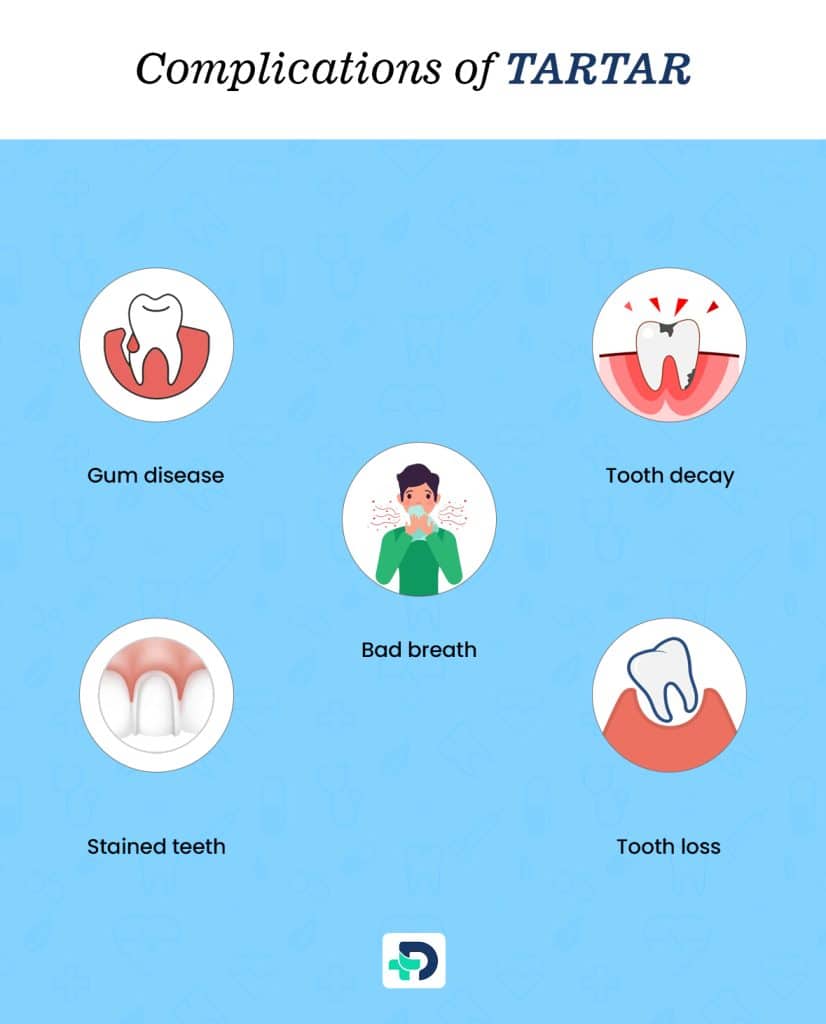
Complications of Tartar
Dental calculus, if left untreated, can lead to several issues, including:
- Gum disease.
- Tooth decay.
- Bad breath.
- Stained teeth.
- Tooth loss.
Gum disease
- Tartar buildup irritates the gums, resulting in inflammation, which, if left untreated, can proceed to periodontitis, a more severe form of gum and surrounding bone disease that can result in tooth loss.8Complications| Researched based study from Nlm.nih.gov
Tooth decay
- Dental calculus creates a rough surface for bacteria to grow on, increasing the likelihood of tooth decay and cavities.
Bad breath
- Tartar, plaque, and related microorganisms can contribute to long-term foul-smelling breath.
Stained teeth
- Dental calculus, at first, can be off-white to yellow but can become darker by taking on the color of the food consumed, like tea, coffee, tobacco, and other substances.
Tooth loss
- If not treated, calculus can grow in size and press the gums lower, eventually leading to shaky teeth or tooth loss9Complications| Researched based study from Nlm.nih.gov
Takeaway
Takeaway
Getting tartar removed at home on your own or with the help of anyone else other than a trained professional like a dentist or an oral hygienist is not recommended as there are risks of creating more rough surfaces on the teeth that may result in faster production of calculus or injuries to the teeth or gums. Regular dental cleanings and meticulous oral care can help avoid this common problem’s progression and complications, resulting in better oral health outcomes.
Any feedback on this article?
 This Articles content was accurate
This Articles content was accurate Very Informative Article
Very Informative Article I have a question or a comment
I have a question or a comment
 This article contains inaccurate content
This article contains inaccurate content This article was not helpful
This article was not helpful I have a question or a comment
I have a question or a comment
We appreciate your helpful feedback!
Checkout our social pages
References
-
Cleveland Clinic
Dental Plaque | Symptoms
-
Al-Mustaqbal University
Dental Calculus | Types
-
Science Direct
Calculus (Dental) | Composition
-
National Library of Medicine
Dental calculus: recent insights into occurrence, formation, prevention, removal and oral health effects of supragingival and subgingival deposits | Causes
-
National Library of Medicine
Effect of age on dental plaque deposition and its control by ultrasonic scaling, dental hygiene chew, and chlorhexidine (0.2%w/v) in dogs | Risk factors
-
National Library of Medicine
Analysis of Predisposing Factors for Rapid Dental Calculus Formation | Risk factors
-
Cleveland Clinic
Tooth Scaling and Root Planing | Treatment
-
National Library of Medicine
Etiology and occurrence of gingival recession - An epidemiological study | Complications
-
National Library of Medicine
Association of gingivitis with dental calculus thickness or dental calculus coverage and subgingival bacteria in feline leukemia virus- and feline immunodeficiency virus-negative cats | Complications














